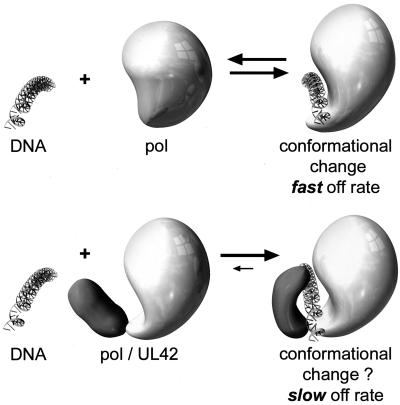FIG. 8.
Conformational model for mechanism by which UL42 increases Pol processivity. Pol and Pol/UL42 are represented schematically before (left) and after (right) binding to P/T. (Top) Although Pol alone displays some change in conformation upon DNA binding, it dissociates rapidly from the P/T, leading to low processivity. (Bottom) Binding of UL42 to the Pol C terminus alters the conformation of Pol and in the presence of DNA, the two proteins together serve as a clamp, decreasing the dissociation rate and increasing processivity.

